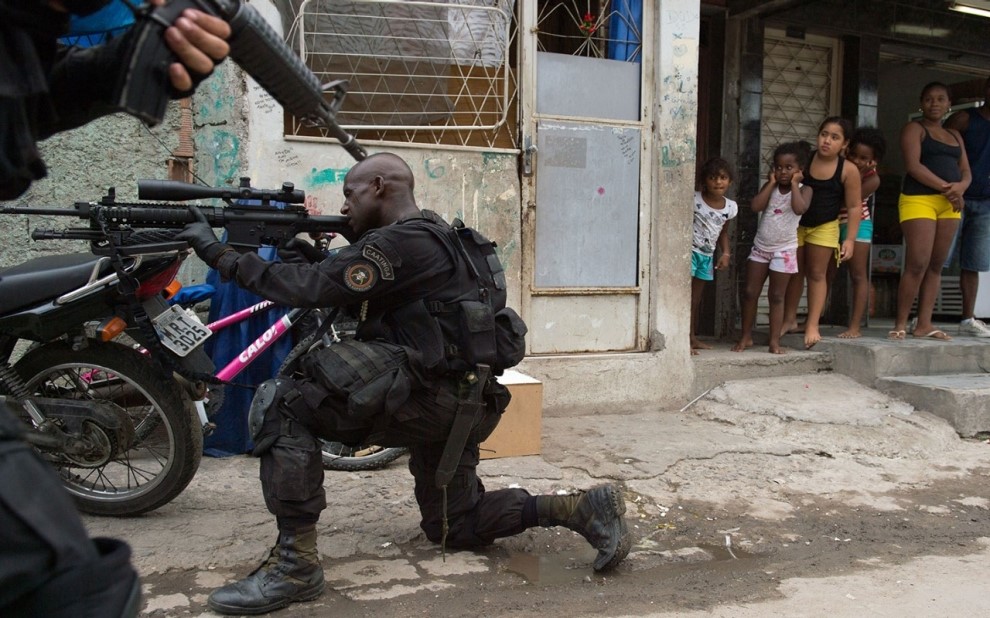
“Part of my son’s skull landed here in the living room.”
-Terezinha Maria de Jesus
Over seven months ago, 10-year-old Eduardo de Jesus was shot to death in front of his home in Complexo de Alemão, one of the many favelas in Rio de Janeiro. While one might expect this horrible death to be the result of gang or drug violence, which so commonly plagues favela life, Eduardo was in fact killed by an unidentified member of the Pacifying Police Unit stationed in the favela. Ironically, these police forces which have been tasked with driving gangs and drug traffickers from Rio de Janeiro’s favelas have caused a great deal of civilian deaths.
Having been so saturated by an overwhelming amount of human of loss, Eduardo’s story was lost until this week when Rio de Janeiro authorities announced that they would not be charging any of the officers who were suspected of involvement with the young man’s death. Following the announcement of Rio de Janeiro’s decision to refrain from charging any of the officers suspected of involvement in young Eduardo’s death, protests have broken out in many of the thirty-eight favelas which are now under the influence of the government’s pacification initiative. Protestors are calling for the immediate expulsion of Pacifying Police Units from their local favelas in hopes of stemming the civilian casualties that have resulted from the initiative.
While Eduardo’s death serves as a stark reminder of the shortcomings of the initiative, the pacification process has dramatically benefitted certain communities. For instance, Vidigal, a pacified favela, once no stranger to gunfire and death, is now a popular tourism spot. Unfortunately, the situation is not as black and white as we might have hoped.
Before the initiation of pacification, many of these favelas were completely devoid of governmental representation. This lack of an authoritative presence allowed gangs and drug dealers to rule favelas however they pleased. Yet since pacification began in 2012, there has been a dramatic decline in reported deaths and robberies in affected communities.
Unfortunately, many police officers and civilians alike have been killed on account of the initiative. In the winding and narrow pathways of the favelas, civilians find themselves caught in the crossfire all too often. Police officers have also been ambushed and executed by gangs looking to send a message. While the pacification initiative has been shown to have a positive impact in some cases, many people are paying the price with their lives.
Could such senseless death be unique to our modern world, or can similar examples be found in ancient history? Understandably, if any major ancient civilizations took violent action against their lower classes, any surviving accounts would likely be “neutralized” or destroyed. There is one civilization, however, ancient Sparta, where the people were as backwards as they were beefy.
Spartan society was increasingly dependent on its slave class, commonly referred to as Helots, as almost every Spartan male was tasked with serving in the military and women were confined to the city; someone had to grow the crops. Helots did not live in Sparta proper, but rather in slum towns on the fringes of the city, similar to the favelas of Rio de Janeiro.
The Helots were obviously treated very poorly. If they did not spend their entire lives growing food that they would never be able to eat, then they were conscripted to serve as skirmishers (bowmen, slingers, or peltasts) for the Spartan military, as true Spartans wouldn’t be caught dead (literally) without a spear and shield in their hands.
In order to prevent the Helots from rebelling against their cruel overlords, the Spartans organized annual “Culling of the Helots,” during which, according to Greek historian Plutarch,
“By the day they would disperse to obscure spots in order to hide and rest. At night they made their way to roads and murdered any helot whom they caught. Frequently, too, they made their way through fields, killing the Helots who stood out for their physique and strength.”
Such senseless violence suggests that humanity is not becoming more violent, but rather, more aware. When the Helots were culled year after year, there were no ancient Grecian Helot-rights activists who stood outside of Sparta with protest signs.
As educated individuals, we have a unique right which very few people possessed thousands of years ago: the right to be informed. What we do with this knowledge, this unique responsibility, is up to each of us.
If we stand by the oppressed, if we make their strife known, if we complain about injustice rather than red cups, I believe that we are doing right by our ancestors, those who, if they had been informed, would have been trembling with fear outside of Sparta, waving their protest signs which would have read, “Culling Helots? How ‘bout Hel-no.”
Lee Shaw is a sophomore BIC student majoring in professional writing and the current editor of the QuickBIC.
Further reading on the Cull of the Helots:
http://ancienthistory.about.com/od/greekterms/g/011709Helots.htm
Further reading on Rio’s Pacification Police Units: